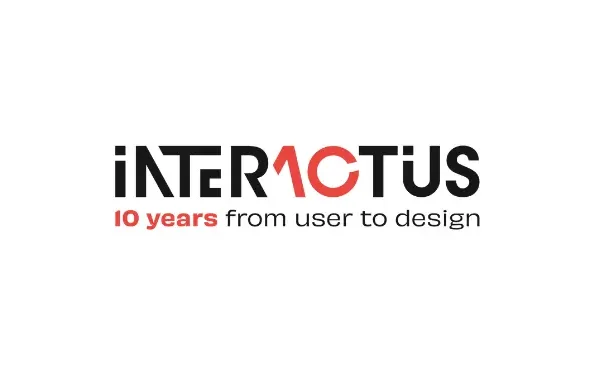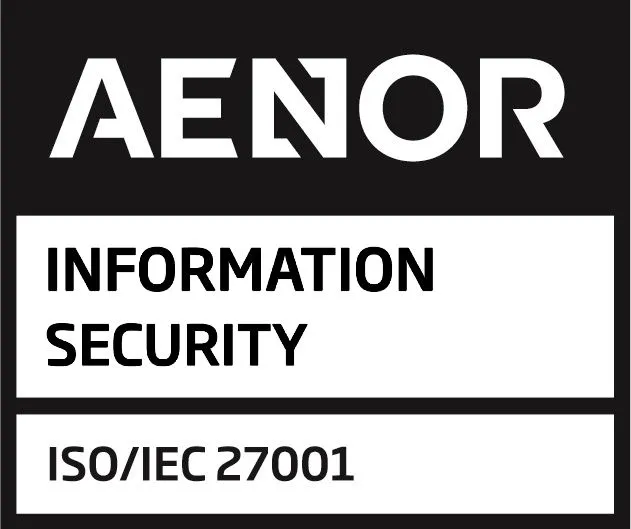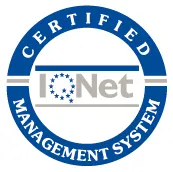
Employee engagement is the lifeblood of a successful company. It is not just about being satisfied with their work, but about feeling part of something bigger and wanting to see it grow. This is why an engaged team contributes directly to the success of the business. Read on to find out how to make employee engagement a strategic pillar of your organisation.
Table of Contents
What is employee engagement and how does it empower your company from within?
In a working environment marked by digital transformation and the quest to attract and retain talent, employee engagement has established itself as a strategic factor in a company’s success.
More than satisfaction with salary or working conditions, employee engagement measures the degree of emotional involvement and motivation towards the company. By feeling engaged, employees strive to add value, innovate, and contribute to business development.
The impact of employee engagement is undeniable: according to studies carried out by a renowned analysis and consultancy firm, Gallup, companies with high levels of engagement are 23% more profitable and reduce staff turnover by up to 43%.
But getting them to feel aligned with the company’s mission and values is no easy task. So how do you build employee engagement?
Employee engagement: why being happy is not the same as being engaged?
We may think that a satisfied employee is also engaged, but this is not always the case. Job satisfaction is important, but true engagement means involvement, motivation, and a desire to contribute to the success of the team. Understanding this difference is key to creating more motivated and productive teams.
Engagement goes beyond being comfortable, it involves an emotional connection to the company. An engaged employee feels that his or her work has an impact and strives to do his or her best, even in adverse situations. They look for solutions, propose ideas and commit themselves as if the company’s success were also their own.
Moving employees from satisfaction to engagement is one of the biggest challenges for human resources departments. The real value lies in offering more than just tangible benefits: a clear purpose, development opportunities and a culture that values participation and initiative.
Employee engagement for motivation, innovation and collaboration
Employee engagement improves the working environment and is a strategic pillar in achieving the company’s objectives. When people feel connected to the organisation, their attitude changes and this is directly reflected in the way they work, relate and contribute value.
Therefore, we can say that this concept drives motivation, innovation and collaboration, as we will see below.
1. Motivation that goes beyond salary
Committed employees believe in what they do and in the company’s mission. This internal motivation drives them to pursue excellence in their work.
For example, the software company Salesforce, known for its culture of values and social responsibility, has created an environment where employees feel part of a greater purpose, resulting in high levels of engagement and productivity.
2. Innovation from within
When employees are engaged, they feel that their ideas count and that they can contribute solutions to improve the company.
A good example is Google, which encourages active participation in projects and open innovation. The multinational technology company has implemented programmes such as ‘20% time’, which allows employees to dedicate part of their working day to further training and to develop their own ideas, some of which have become successful products such as Gmail.
3. Collaborative efforts that add-up
Engagement also strengthens relationships between teams. Engaged people are more likely to collaborate, share knowledge, help colleagues, and recognise their efforts, which creates a more open and productive working environment.
Companies like Zappos, a shoe and apparel retailer famous for its organisational culture, promote collaboration with policies that value teamwork and communication, which contributes to greater internal cohesion and customer satisfaction.
Another example is Teleperformance, a multinational outsourcing company, which is committed to employee recognition within the company and among employees themselves. In addition to employee satisfaction and the volume of peer recognition, it has increased its eNPS by 6% in the last year.
What do these practices teach us about employee engagement? Creating experiences that motivate, giving space for creativity, and listening to the team make a difference. When employees feel valued, innovation and success come hand in hand.
Benefits of employee engagement
In addition to improving life within the company, investing in engagement translates into long-term results. These are the benefits of employee engagement:
- Higher productivity: engaged employees strive to perform at their best.
- Lower turnover: people with an emotional connection to the company are less likely to consider changing jobs.
- Better work climate: a positive environment is created where trust and mutual respect are the norm.
- More innovation: employees feel free to propose ideas and take risks.
- Better customer experience: engaged employees convey enthusiasm and are more involved in delivering quality service.
Encouraging engagement creates a virtuous circle: motivated employees, more satisfied customers and better results.
How are you driving engagement in your organisation? Tell us about your experiences and help you engage the engine of success!
Key drivers of employee engagement
Human resources departments play a key role in making such engagement a reality, but what are the drivers?
1. Clear purpose and values
People want to feel that their work has meaning and that they contribute to a greater purpose. When employees know the mission and perceive that the company’s values are reflected in their day-to-day work, it is easier for them to identify with the organisation and become emotionally engaged. Communicating values transparently and consistently across all areas is the organisation’s first step in generating commitment.
2. Close and empathetic leadership
Managers are an important part of employee engagement. Leadership based on trust, active listening and recognition drives motivation and engagement. Leaders who know how to give constructive feedback, celebrate achievements and support the development of their teams create an environment where people are eager to contribute.
3. Professional development opportunities
Growth is one of the key drivers of engagement. Offering training, career paths and opportunities to take on new challenges helps employees see their work as a long-term investment.
4. Well-being and work-life balance
Engagement cannot exist if people feel that their personal lives are sacrificed for work. Facilitating work-life balance, offering flexible working hours or telecommuting and supporting physical and emotional wellness programmes create an environment where employees can give the best of themselves without giving up their personal balance.
Each company has its own formula for boosting employee engagement, but all these factors have one thing in common: they put people at the centre.
Actions and practices to improve employee engagement
Getting employees engaged with the company does not happen overnight. It is a process that requires constant attention and concrete actions. Here are some strategies you can put in place to strengthen team engagement.
1. Implement regular surveys and continuous feedback
The best way to find out how employees feel is to ask them directly. Surveys allow you to detect what works and what needs to be improved. And feedback should go both ways: evaluating employees’ performance and listening to their opinions and proposals. Creating spaces where they can express their ideas – such as suggestion boxes or team meetings – helps them feel an active part of the company.
- Practical tip: Use digital tools such as Vip Connect to create mailboxes, launch quick and anonymous surveys, with questions about the work environment, leadership or growth opportunities. If you have employees outside the office or without corporate email, this tool offers the App format to reach everyone.
2. Diseñar programas de reconocimiento y recompensas
Recognition is one of the factors that has the- most impact on motivation and the most impact on engagement. We recommend tailoring rewards to the needs and preferences of each individual.
- Practical tip: Create a recognition programme where the company rewards its employees and employees can nominate their colleagues, highlighting their effort and contribution to the team. You can use the Vip Incentives platform to create incentive campaigns and reward employees. And, for peer-to-peer recognition, Vip Awards is ideal for aligning recognition with corporate values.
3. Commitment to training and internal growth
Employees are more committed to companies that invest in their professional development. Offering training plans, mentoring or internal projects is a way of showing that the company is committed to their talent in the long term.
- Practical tip: Create an internal training catalogue with online courses, workshops and conferences tailored to each department. Vip Connect is the ideal tool for this, as it allows you not only to communicate, but also to create your own e-Learning platform, with complete courses, lessons and tests to validate the knowledge acquired.
4. Create a community within the company
A sense of belonging is strengthened when people feel part of a community. Encouraging employees to connect through affinity groups, events or activities outside the work environment helps to create stronger bonds between teams.
- Practical tip: Organise themed clubs (sport, sustainability, culture), afterworks or solidarity days to strengthen the bond between colleagues. Vip Connect can be a great ally when it comes to organising events and activities, facilitating all HR management, with automatic communications and systems that simplify everything.
The key to improving engagement is to build a culture where people feel listened to and empowered to grow. Implement these initiatives consistently and you will see results!
Reasons to measure employee engagement
Assessing employee engagement is essential because it provides a clear view of how employees connect with the company’s values and objectives. This measurement allows you to identify strengths and areas for improvement in organisational culture, which facilitates strategic decision making.
With accurate data, companies can create a more dynamic and aligned environment, boosting talent retention and overall performance.
To measure employee engagement, you can use various methodologies and tools, which provide a comprehensive view of employee engagement and help identify areas for improvement. In our blog, we explain in more detail how to assess employee engagement.
The commitment that drives your business
Employee engagement is much more than an HR strategy: it is the engine that drives productivity, innovation and a positive organisational culture. Through an approach that focuses on emotional connection, recognition and employee development, companies can build an engaged team that delivers value and fosters a collaborative and nurturing work environment.
Employee engagement is not bought or imposed, it is built day by day, and it is an ongoing process that must be nurtured with consistent actions.









